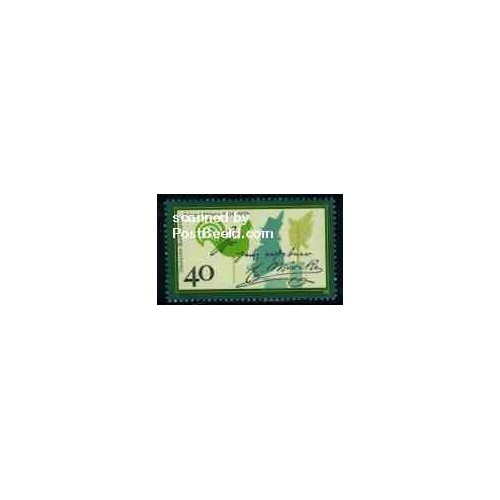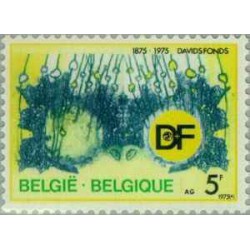- جدید



Germany, Federal Republic 1975 - E. Morike 1v
توجه : درج کد پستی و شماره تلفن همراه و ثابت جهت ارسال مرسوله الزامیست .
توجه:حداقل ارزش بسته سفارش شده بدون هزینه پستی می بایست 100000 ریال باشد .
Eduard Friedrich Mörike (8 September 1804 – 4 June 1875) was a German Romantic poet.
| Eduard Mörike | |
|---|---|
 |
|
| Born | 8 September 1804 Ludwigsburg, Electorate of Württemberg |
| Died | 4 June 1875 (aged 70) Stuttgart, Kingdom of Württemberg |
| Occupation | Poet |
| Nationality | German |
Mörike was born in Ludwigsburg. His father was Karl Friedrich Mörike (d. 1817), a district medical councilor; his mother was Charlotte Bayer. He attended the Latin school at Ludwigsburg, and the seminary at Urach (1818) where he made the acquaintance of Wilhelm Hartlaub and Wilhelm Waiblinger. He then studied theology at the Seminary of Tübingen where he met Ludwig Bauer, David Friedrich Strauss and F. T. Vischer.[1]
He followed an ecclesiastical career, becoming a Lutheran pastor. In 1834 he was appointed pastor of Cleversulzbach near Weinsberg, and, after his early retirement for reasons of health, in 1851 became professor of German literature at the Katharinenstift in Stuttgart. This office he held until his retirement in 1866; but he continued to live at Stuttgart until his death. In what political and social views he espoused, he was monarchist and conservative.
Mörike is a member of the so-called Swabian school which gathered around Ludwig Uhland. His poems, Gedichte (1838; 22nd ed., 1905), are mostly lyrics, often humorous, but expressed in simple and natural language. His Lieder (songs) are traditional in form and have been compared to those of Goethe. His ballad “Schön Rotraut” — opening with the line “Wie heisst König Ringangs Töchterlein?” — became a popular favorite.[1]
His first published work was the short novel Maler Nolten (“The painter Nolten”, 1832; 6th ed., 1901), a Bildungsroman and fantastic tale dealing with artist life which revealed his imaginative power and enjoyed great popularity. The novella Mozart auf der Reise nach Prag (“Mozart on the way to Prague”, 1856) was a humorous examination of the problems of artists in a world uncongenial to art. It is frequently cited as his finest achievement.[1][2] He also wrote a somewhat fantastic Idylle vom Bodensee, oder Fischer Martin und die Glockendiebe (1846; 2nd ed., 1856), the caprice Das Stuttgarter Hutzelmännlein (1855), and published a collection of hymns, odes, elegies and idylls of the Greeks and Romans, entitled Klassische Blumenlese (1840). He did translations of Anacreon and Theocritus.[3]
Mörike's Gesammelte Schriften (“Collected Writings”) were first published in 1878 (4 vols.). Later editions are those edited by R. Krauss (6 vols., 1905), and the Volksausgabe (“Popular edition”), published by Göschen (4 vols., 1905). Selections from his literary remains were published by R. Krauss in Eduard Mörike als Gelegenheitsdichter (1895), and his correspondence with Hermann Kurz, Moritz von Schwind, and Theodor Storm, by J. Bachtold (1885–1891); an edition of Mörike's Ausgewählte Briefe (“Selected letters”), in 2 vols., appeared 1903-1904.
His work was greatly praised by the philosopher Ludwig Wittgenstein who recommended him to Bertrand Russell as
really a great poet and his poems are among the best things we have...the beauty of Mörike's work is very closely related to Goethe's.[4]
Many of his lyrics were set to music by Hugo Wolf,[5] Ludwig Hetsch and Fritz Kauffmann. Ignaz Lachner set to music his opera Die Regenbrüder.[3] Many of his poems became established folksongs.[2]
تشکر نظر شما نمی تواند ارسال شود
گزارش کردن نظر
گزارش ارسال شد
گزارش شما نمی تواند ارسال شود
بررسی خود را بنویسید
نظر ارسال شد
نظر شما نمی تواند ارسال شود

Germany, Federal Republic 1975 - E. Morike 1v
check_circle
check_circle



















